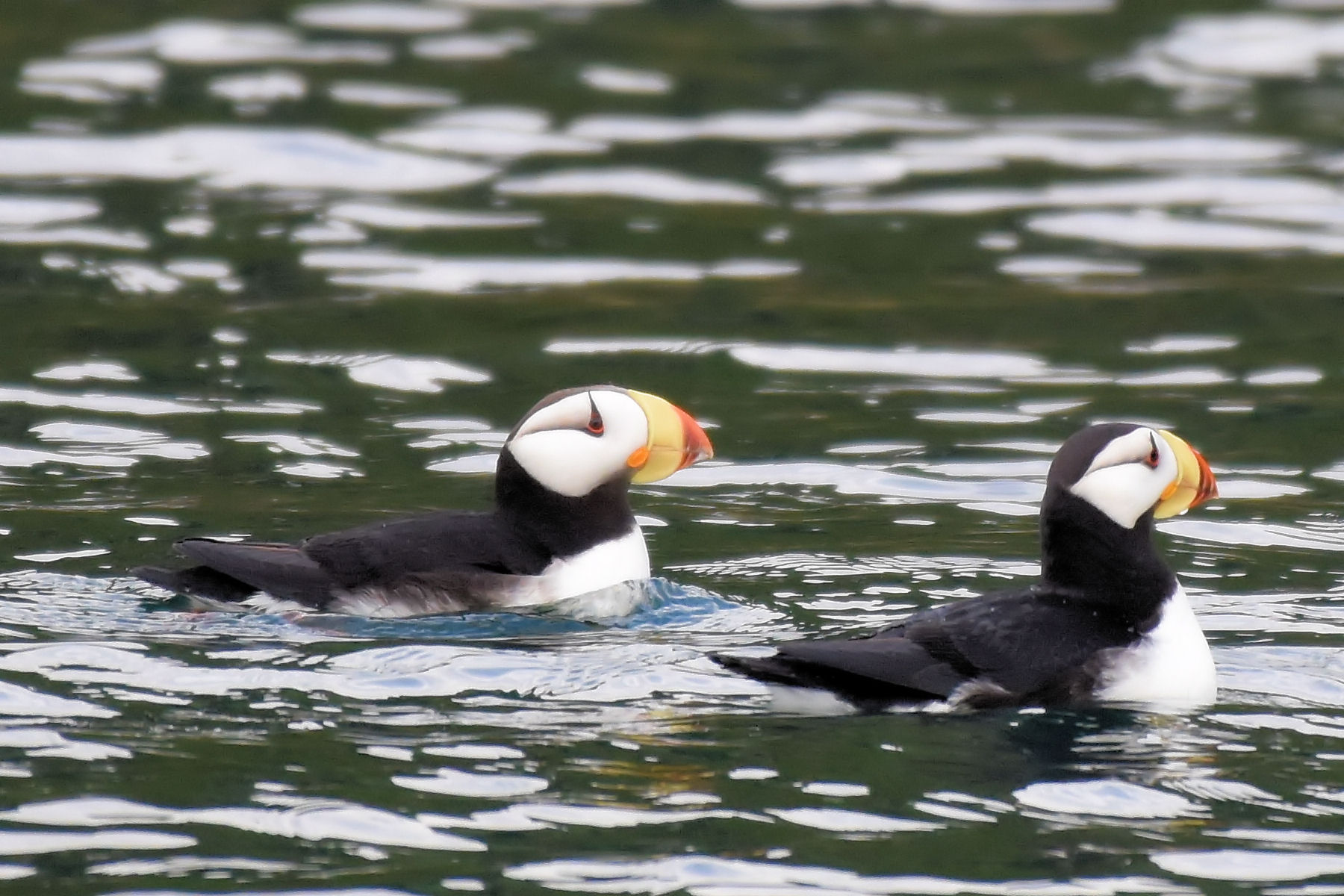Gjesvaer, Norway
You just have to live here. That’s the conclusion I have come to. Taking pictures from a violently moving boat that is tossed about by huge ocean swells while bracing myself against ferocious winds and trying to stay dry, was not conducive to good photography. The best nature photography is done with patience – crawling on my hands and knees - over long periods of time – with the light streaming in at the right angle – when the puffin is taking off right in front of you. Anyway, unless I want to abandon my horsy life near Vancouver, a move to the fishing village of Gjesvær (polulation 150) just 20 km from the Nordkapp in northern Norway and a dedication of my life to nature photography, ain’t going to happen any time soon. Still, given the short time I had in this picturesque nature reserve, I thoroughly enjoyed the challenge of capturing some images of bird life from the little boat we had chartered.
At the first sight of puffins (Fratercula arctica, the Atlantic puffin or Papageientaucher), I was intrigued. What a neat little bird! As we were circling the nature reserve, suddenly they were everywhere, we were surrounded. The sky was almost black with thousands of puffins, like a swarm of mosquitoes overhead. They were landing and taking off from the water beside us and we could see them near their burrows on the hillside, so clearly visible with their distinctive orange coloured beaks and feet. I had to do some research.
Here is what I learned:
Atlantic puffins spend a solitary life at sea for most of their lives; they only come to shore to mate and raise their young.
Puffins choose a partner for life; they mate and produce only one egg every spring.
Once the juvenile puffin has left the nest, the parents leave the island and separately go back to sea only to find each other again during the following spring at the same location and the same burrow.
Young puffins spend the first few weeks of their lives inside the burrow, where they are being fed by their parents; when ready, they find their way to the ocean (by walking or hopping), take to the water and don’t return until they are mature enough to mate (4 years).
Puffins only display their orange beaks and feet during the mating season; once at sea, they molt and shed the orange from their bodies which become darker and less visible for predators.
Puffins tend to eat young herring up to 7 cm (3”) long; they can catch and hold in their beaks several fish at a time; they find food within 100 km from shore and tend to return to their nests in swarms; this seems to be a protective behaviour as returning in large numbers will confuse predators and make it difficult for them to single out individual victims.
Puffins can fly up to 80 km/h; because of their roundish body shape and relatively short wings, puffins have to work hard to get air-borne; when taking off the water, they launch themselves by running across the water while vigorously flapping their wings; the short wings have the advantage that they can be used as fins while diving; puffins can dive to a considerable depth and stay under water for up to 1 minute.
Puffins always return to the location of their own birth; their distribution ranges from Newfoundland, Greenland, Iceland, Norway, Spitsbergen to England; the puffins’ conservation status is classified at “least concern”.
While the number of puffins in Iceland and Norway are impressive, there is concern about their future; the puffins’ greatest weaknesses are their territorialism and apparent lack of adaptation; with increasing water temperature, the herring will be wandering further north, keeping the puffins looking for food; early observations have shown that puffins do not adapt easily by finding alternative food sources, they starve to death rather than switching to a different fish species.
Norway deeply impresses me – again (I visited Norway the first time in my teens). It is a country with a well-functioning society, beautiful landscapes, admirable financial and political stability and friendly people. It is also very clean. Don’t even think about launching your career as a street sweeper in a Norwegian town. There is nothing to sweep.
Hmm…I wonder if you can have horses in Gjesvær…

